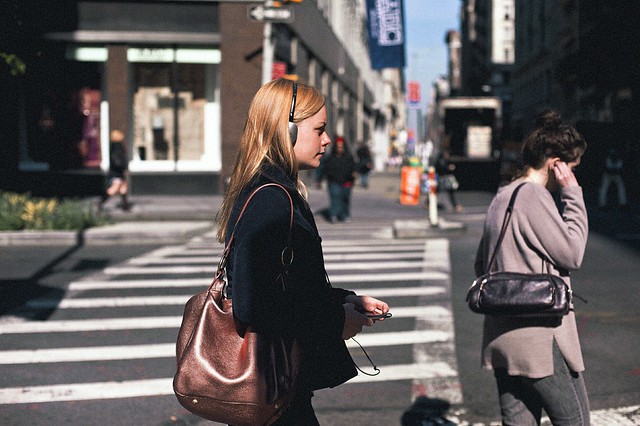Pedestrian Safety Leads to More Walking, or is it Vice Versa?
As a nation, we Americans don't walk very much, especially compared to residents of other countries. Nationally, we take only about ten percent of our total trips by foot, while we take 83 percent by car, truck, or van. We take less than three percent of our work-related trips by foot.
But the numbers change dramatically when we look at individual cities. Fifteen percent of Bostonians walk to work, over five times the national average. Residents of Washington, DC, New York City, San Francisco and Honolulu also enjoy very high rates of walking to work, all around or above ten percent.
Why is that? Well, for starters, all those cities have relatively compact downtowns with nearby housing, well-connected streets, and good pedestrian infrastructure, all shown to contribute to the prevalence of walking. Notably, these leading cites all also enjoy relatively good safety rates for walking, according to a comprehensive new analysis of government data written by the Alliance for Biking & Walking and published by Island Press.

So, are these cities safer because more people are walking and drivers are more used to paying attention? Or is it because they have relatively safe and convenient pedestrian environments that encourage more walking? Probably a little of both.
(An intriguing outlier is Colorado Springs, which has the country's fourth-lowest pedestrian fatality rate per walking commuter, at 3.4 annual pedestrian deaths per 10,000 walking commuters. But the city has only a three percent walk commuting rate, barely above the national average and lower than the big-city average of five percent. It would be interesting to know if the numbers in Colorado Springs hold up over time – the Alliance used a three-year average – and what the safety-related policies are there.)
Bicycling and Walking is generally consistent with the far more publicized Dangerous by Design, a report released only five days later by Smart Growth America's National Complete Streets Coalition and using statistical analysis to document the very real hazards faced by walkers in communities across America. The two analyses use related but not identical statistical sets and emphasize distinct points, so that each can be read as adding richness to the findings of the other. (I am a board member and co-founder of Smart Growth America but have had no connection with Dangerous by Design other than to read it after publication.)
Fort Worth and Jacksonville have the lowest rates of pedestrian commuting among the 52 large cities analyzed in Bicycling and Walking. They also are among the most unsafe cities for walkers, according to the Alliance's data.
Among the encouraging news in the benchmarking report is that commuting by walking in the US is on a gradual upswing since 2005, 
While correlation does not establish causation, the implications of the findings in Bicycling and Walking are intriguing either way: One suggestion of the analysis is that, if we do more to create safe walking environments, people may walk more and become more healthy. The other is that, if people walk more, walking may become safer, creating a multiplier effect.
The Alliance also reports that pedestrian fatality rates are down sharply since 1980, although so is walking until quite recently. Walking represents 12.7 percent of all trips in the US, but 14.1 percent of all traffic fatalities. Older and nonwhite Americans are at disproportionate risk, according to the Alliance's data.
Bicycling and Walking is an ambitious, thoroughly documented undertaking running to some 260 pages and containing over 200 tables and graphs. Its analysis of bicycling data is as comprehensive as that for walking, and it contains chapters on economic benefits, policy, infrastructure and design, connecting to transit, education, and organizations and agencies working on the issue, in addition to the information cited above.
Move your cursor over the images for credit information.

